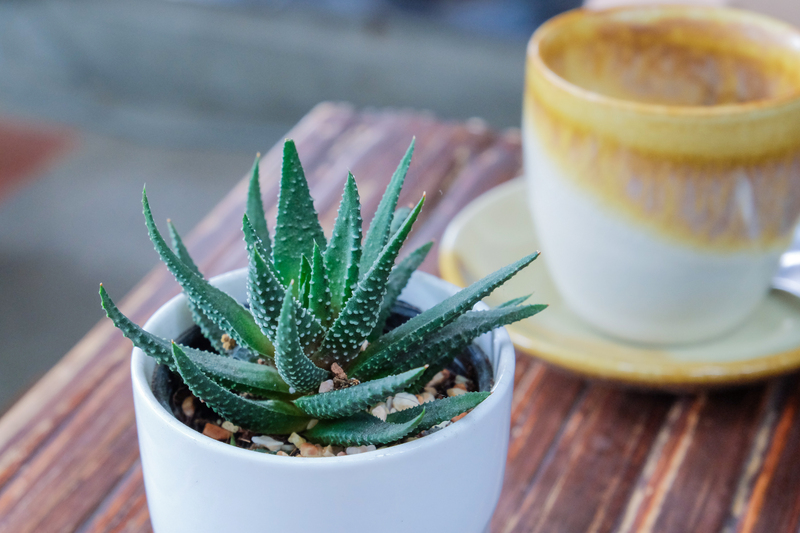Sustain Your Orchid's Beauty and Health
Posted on 23/05/2025
Sustain Your Orchid's Beauty and Health: The Comprehensive Guide
Orchids are renowned for their exotic elegance and are a favorite among plant enthusiasts. Their allure lies in vibrant blossoms, intricate shapes, and an aura of sophistication. However, to sustain your orchid's beauty and health long-term, a specific care regimen is essential. This in-depth article covers the finest secrets, actionable tips, and expert-approved methods to keep your orchid gorgeous and vigorous year-round.

Understanding Orchid Species: The Foundation of Lasting Health
There are over 25,000 orchid species, but a handful dominate the home horticulture scene. Phalaenopsis (moth orchids), Dendrobium, Cattleya, and Oncidium are the most popular for their resilience and stunning blooms. Each has unique requirements. To maintain your orchid's health, it's vital to identify your plant's type and adjust care accordingly.
- Phalaenopsis (Moth Orchids): Great for beginners, require consistent moisture.
- Dendrobium: Need more light, prefer drier conditions between waterings.
- Cattleya: Thrive on bright light and a dry-out period between watering.
- Oncidium: Enjoy brisk air movement and thrive on less frequent watering.
Light: The Lifeblood of Orchid Beauty
Getting the Right Light for Orchids
To sustain your orchid's striking blossoms and robust foliage, mimicking their natural habitat is crucial. Orchids mostly hail from bright, filtered jungle canopies, not full sunlight. Excessive direct sunlight can scorch leaves, while insufficient light results in poor flowering and weak growth.
- East-Facing Windows: Ideal for most orchid varieties, offering gentle morning ray exposure.
- South or West-Facing Windows: Use sheer curtains to diffuse intense sun.
- Artificial Grow Lights: LED or fluorescent lamps placed 8-12 inches above your orchids can provide needed intensity, especially in winter.
Tip: Leaves should be light green--not dark green or reddish--indicating balanced light exposure.
Water Wisely: Precision is Key to Orchid Longevity
Orchids are epiphytes, often growing on tree branches in the wild. Their roots are adapted to quick draining and intermittent wetness.
- Watering Schedule: Once a week is typical, but it depends on climate, potting substrate, and species.
- The Soak-and-Dry Method: Water thoroughly, allowing excess to drain, then wait for the potting medium to dry out before watering again.
- Avoid Standing Water: Let roots breathe--never let water accumulate in the bottom dish.
Overwatering is the main cause of orchid health issues. Yellowing or mushy roots indicate trouble. Use your finger or a wooden skewer to check the potting medium's dryness before watering.
Humidity: The Secret Ingredient in Orchid Care
Orchids revel in 40-70% humidity, much higher than the average home's. To support your orchid's vitality, increase surrounding moisture:
- Humidifier: Ideal for a dedicated orchid room or greenhouse.
- Pebble Tray: Position orchids above a tray filled with wet pebbles and water for natural evaporation.
- Misting: Lightly mist leaves in the morning but never saturate flowers or crowns (where rot can set in).
Potting Media and Repotting: The Right Foundation
Choosing the Perfect Potting Mix
Your orchid's health hinges on the substrate. These plants never tolerate standard potting soil. Instead, use:
- Bark Mix: Common and well-aerated.
- Sphagnum Moss: Retains moisture, good for young or stressed orchids.
- Coconut Husk Chips: Long-lasting, provides a balance of moisture and aeration.
- Charcoal & Perlite: Often mixed in for additional drainage and cleanliness.
Repotting your orchid every 1-2 years is crucial for optimal orchid health and sustained beauty. This prevents media decomposition, which causes root suffocation and disease.
- Repot when roots outgrow the pot, media breaks down, or after flowering.
- Use sterilized tools, and trim damaged roots.
- Choose a pot only slightly larger than the root mass--orchids thrive with slightly cramped roots.
Fertilizing: Feeding for Strong Blooms and Vibrant Leaves
Sustaining your orchid's beauty requires the right nourishment. In their native environment, orchids glean sparse nutrients from decaying organic matter and rainwater. For home orchids:
- Use a balanced orchid fertilizer (20-20-20 or similar) diluted to 1/2 strength.
- Fertilize every two weeks during active growth (spring to early fall).
- Flush the potting media with water monthly to prevent fertilizer salt build-up.
Don't fertilize orchids in winter dormancy; let them rest naturally.
Leaf and Root Care: The Unsung Heroes
Healthy leaves and roots are integral to sustaining your orchid's overall vitality:
- Wipe leaves gently with a damp, soft cloth to remove dust and pests.
- Monitor roots through clear pots; healthy roots are plump and white or greenish.
- Trim dried pseudo-bulbs or dead roots with sterile scissors.
Orchid Pests and Diseases: Prevention and Effective Management
Even the most attentive grower must be vigilant about common orchid pests and diseases that threaten to undermine the health and beauty of your orchids.
Pest Prevention and Control
- Mealybugs & Scale: Remove with cotton swabs dipped in rubbing alcohol.
- Aphids: Rinse off with lukewarm water or use insecticidal soap.
- Spider Mites: Increase humidity and spray with neem oil if necessary.
Managing Orchid Diseases
- Root Rot: Typically results from overwatering. Remove affected roots, repot in fresh media.
- Leaf Spots: Trim infected areas; ensure good air flow and never splash water on leaves in evening hours.
- Fungal Infections: Use fungicides formulated for orchids sparingly and only as a last resort.
Prevention tips: Always use sterile tools, don't allow water to pool in the orchid's crown, and quarantine new plants before adding them to your collection.
Maximizing Orchid Blooms: Get the Most From Every Flowering Cycle
The most stunning benefit of proper orchid care is a cascade of vibrant blooms. However, some owners struggle with reluctant bloomers. To sustain the beauty of your orchid through prolific flowering:
- Correct Lighting: Adequate luminosity promotes flowering.
- Rest Periods: After flowering, allow slightly cooler temperatures and less water to mimic natural cycles.
- Fertilize with Bloom-Booster: High in phosphorus before the expected flowering season.
- Don't Cut Unbloomed Spikes Prematurely: Some varieties rebloom on the same spike.
Maintaining these practices supports your orchid's health, ensuring repeat floral shows and preserved elegance.
Bonus Tips: Sustain Your Orchid's Beauty and Health for Years
- Rotate your orchids weekly: Ensures even light distribution and balanced growth.
- Use rainwater or distilled water: Tap water with high mineral content can cause leaf spotting and root issues.
- Provide gentle air movement: A small fan promotes strong stems and deters pests/fungal disease.
- Regularly inspect your orchid collection: Early problem detection is the best defense.
- Keep a care journal: Document watering, fertilizing, repotting, and bloom times to refine your routine.

Frequently Asked Questions About Orchid Care
How Do I Know My Orchid Is Happy and Healthy?
Visual cues are the best indicator. Healthy orchids display firm, plump roots, unblemished green leaves, and robust spikes. A steady schedule of flower production signals that you are sustaining your orchid's beauty and health successfully.
Should You Cut Orchid Flower Spikes?
After blooms fade, trim spikes just above the node ("eye") or remove entirely for rest. Some species flower from old spikes; others prefer a clean slate. Research your orchid's variety to adopt the best approach.
Is It Normal for Orchids to Lose Leaves or Roots?
Occasional root or leaf loss is a natural cycle, especially after blooms. If many roots or leaves deteriorate rapidly, revisit your watering, lighting, or repotting practices to maintain orchid health.
What If My Orchid Won't Flower?
Orchid bloom reluctance may stem from insufficient light, excess nitrogen fertilizer, or lack of a rest period. Adjust exposure and seasonal care to encourage spectacular flowering.
How Can I Keep My Orchid Clean and Free of Dust?
Wipe leaves gently with a damp soft cloth once a month or after misting. Never use harsh chemical leaf sprays--they clog stomata, hindering plant breathing and beauty.
Conclusion: The Art of Sustaining Orchid Beauty and Health
Orchids are a testament to nature's artistry--delicate yet remarkably resilient when given proper care. By understanding and mimicking their wild environments, maintaining balanced watering and light, employing suitable potting mixes, and staying vigilant about pests, any enthusiast can sustain their orchid's beauty and health for years.
Approach orchid care as both a science and a meditative practice. Observe, adjust, and enjoy the exquisite reward of healthy blooms in your home or office. Remember, small proactive steps add up to a lifetime of vibrant, thriving orchids. Ready to elevate your orchid journey? Start by refining your care routine today!



